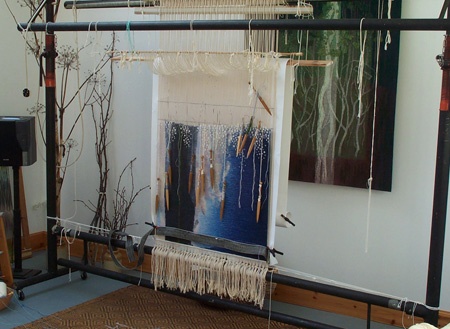About Tapestry 3
About Tapestry Continued/3
Origins
Since tapestry does not require very complicated looms and is in some ways the simplest form of hand weaving, it is likely that a form of tapestry weaving has existed in many places for much longer than we actually have concrete evidence of it. Tapestry has existed in its present form since at least the time of the Pharaohs. We know this because a tapestry loom very similar to those used by tapestry weavers today is depicted on a tomb painting from the second millennium BC. The Classical Greeks were familiar with tapestry as demonstrated by the famous story of Penelope, weaving by day and unpicking her work by night. Unfortunately no actual examples of classical Greek tapestry survive. We have very fine examples of tapestry from Coptic Egypt from the first few centuries AD. These miniatures were used to decorate plain linen robes. They are extremely skilfully woven and demonstrate a playful sense of design. We also have very beautiful and highly sophisticated examples of pre-Columbian Andean tapestry woven grave bands and clothing. We also have an example of a very beautiful tufted rug decorated with horsemen from around 2000 BC discovered in a tomb in Pazyric in the Altai Mountains. These very early pieces have only survived because of exceptionally dry and stable conditions in some Coptic and South American burials and in the case of the Pazyric Rug, permafrost.
European tapestry
Very few examples of European tapestry survive from pre 1300AD. We have little evidence of how tapestry developed in the Dark Ages since the earliest tapestries which do survive represent the art at a mature stage in its development. It is assumed that fine weaving techniques came from the East where sophisticated carpets, kelims and silk cloth were known to exist from earliest times.

